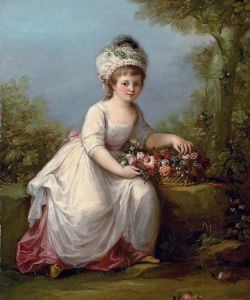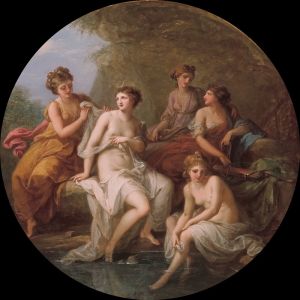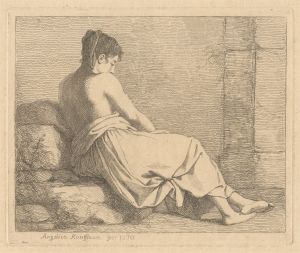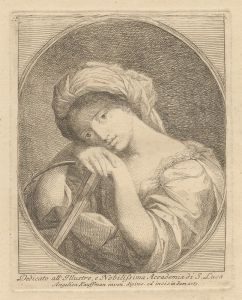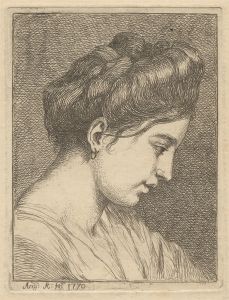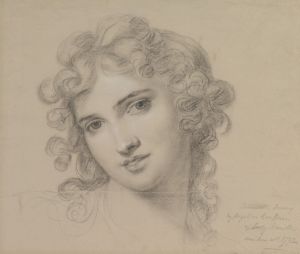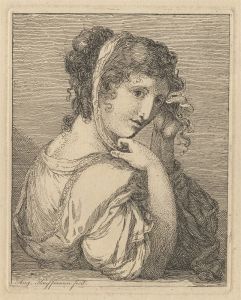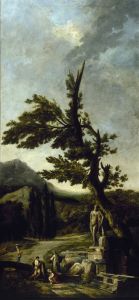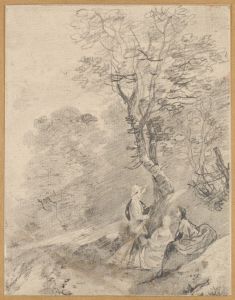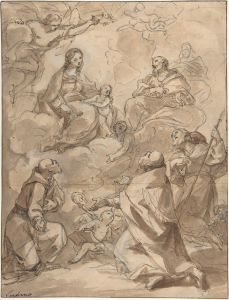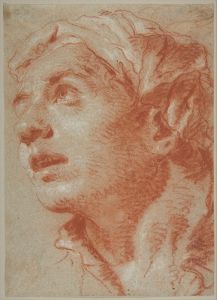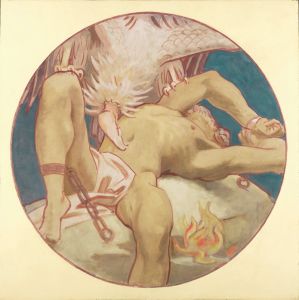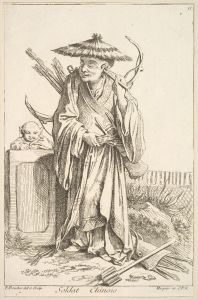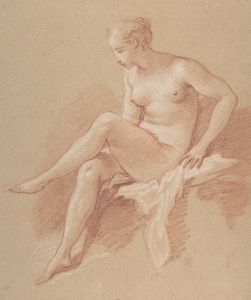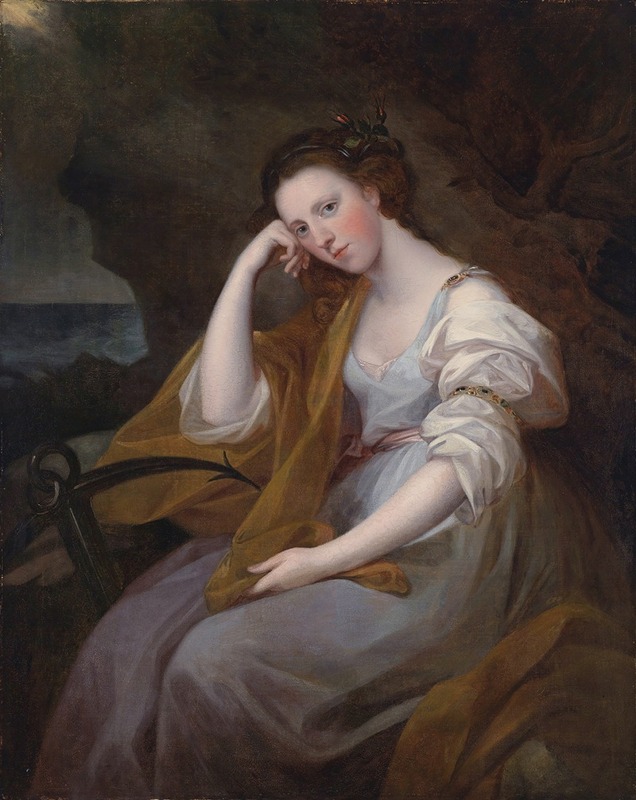
Portrait of Lady Louisa Leveson Gower as Spes
A hand-painted replica of Angelica Kauffmann’s masterpiece Portrait of Lady Louisa Leveson Gower as Spes, meticulously crafted by professional artists to capture the true essence of the original. Each piece is created with museum-quality canvas and rare mineral pigments, carefully painted by experienced artists with delicate brushstrokes and rich, layered colors to perfectly recreate the texture of the original artwork. Unlike machine-printed reproductions, this hand-painted version brings the painting to life, infused with the artist’s emotions and skill in every stroke. Whether for personal collection or home decoration, it instantly elevates the artistic atmosphere of any space.
Angelica Kauffman’s Portrait of Lady Louisa Leveson Gower as Spes is a notable example of 18th-century portraiture that combines neoclassical ideals with personal representation. Painted by Kauffman, a Swiss-born artist who gained prominence in Europe and England, the work depicts Lady Louisa Leveson Gower, a member of the British aristocracy, in the guise of Spes, the Roman personification of hope.
Angelica Kauffman (1741–1807) was one of the founding members of the Royal Academy of Arts in London and one of the most celebrated female artists of her time. Known for her historical paintings and portraits, Kauffman often incorporated classical themes and allegorical elements into her works, reflecting the neoclassical style that was popular during the late 18th century. Her ability to blend classical motifs with the personal characteristics of her sitters made her portraits particularly admired.
Lady Louisa Leveson Gower (1749–1827) was the daughter of Granville Leveson-Gower, 1st Marquess of Stafford, and a prominent figure in British high society. By portraying her as Spes, Kauffman aligns Lady Louisa with the virtues and ideals associated with the Roman goddess of hope. In Roman mythology, Spes is often depicted as a youthful figure holding a flower or a stalk of grain, symbolizing optimism and the promise of the future. While the specific attributes of Spes in this painting are not widely documented, Kauffman’s choice to depict Lady Louisa in this allegorical role reflects the neoclassical fascination with antiquity and the moral virtues associated with classical figures.
The painting is characterized by Kauffman’s signature style, which combines soft, harmonious colors with elegant compositions. Lady Louisa is rendered with grace and poise, embodying both the dignity of her aristocratic status and the idealized qualities of the allegorical figure she represents. The work exemplifies Kauffman’s skill in blending portraiture with allegory, a hallmark of her artistic approach.
The exact date of the painting is not definitively recorded, but it is believed to have been created during the height of Kauffman’s career in the late 18th century. The current location of the painting is also not widely documented, and it is unclear whether it remains in a private collection or is housed in a public institution.
This portrait is a testament to Kauffman’s ability to navigate the artistic and social expectations of her time, producing works that were both fashionable and deeply rooted in classical tradition. It also highlights the cultural milieu of 18th-century Britain, where classical themes were often used to convey personal and societal ideals.





